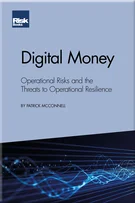Blending transparency, accountability and risk strategy
Acknowledgements
Introduction
What is psychological safety and how does it impact organisations?
The seven principles of psychological safety in managing risk and uncertainty
Blending transparency, accountability and risk strategy
Empowering teams for effective risk management
Leveraging setbacks for informed risk management
Integrating adaptive and agile risk intelligence with psychological safety
Building a foundation of trust and oversight
Cultivating supportive environments
Organisational maturity assessment
Dealing with multicultural environments
Change management
Establishing the roadmap
Adapting the risk function
Conclusion
A personal ask
Appendix
References
Creating psychological safety is not just a nicety; it is a strategic imperative for successful risk management, as it encourages early detection and swift response.
“Make it safe for your employees to fail!” This mantra should serve as the guiding principle at the heart of effective risk policy and strategy. It encapsulates the essence of a culture where transparency, trust and accountability converge to create an environment conducive to growth and innovation. This chapter further explores this principle and its implications, as I delve into how transparency, accountability, and risk strategy and policy all combine to nurture psychological safety and responsible risk management.
At its core, this statement also underscores the critical role of transparency and trust in risk management. This is the first concrete application of the “fail fast” concept mentioned in Chapter 1. Establishing “commercial-” and “innovation-” friendly risk policies and risk strategies is crucial to enable an effective risk-taking culture while fostering innovation.
PRINCIPLE 1: PROMOTE TRANSPARENCY AND ACCOUNTABILITY
Principle 1: Psychological safety requires transparency and accountability. Organisations
Copyright Infopro Digital Limited. All rights reserved.
As outlined in our terms and conditions, https://www.infopro-digital.com/terms-and-conditions/subscriptions/ (point 2.4), printing is limited to a single copy.
If you would like to purchase additional rights please email info@risk.net
Copyright Infopro Digital Limited. All rights reserved.
You may share this content using our article tools. As outlined in our terms and conditions, https://www.infopro-digital.com/terms-and-conditions/subscriptions/ (clause 2.4), an Authorised User may only make one copy of the materials for their own personal use. You must also comply with the restrictions in clause 2.5.
If you would like to purchase additional rights please email info@risk.net










